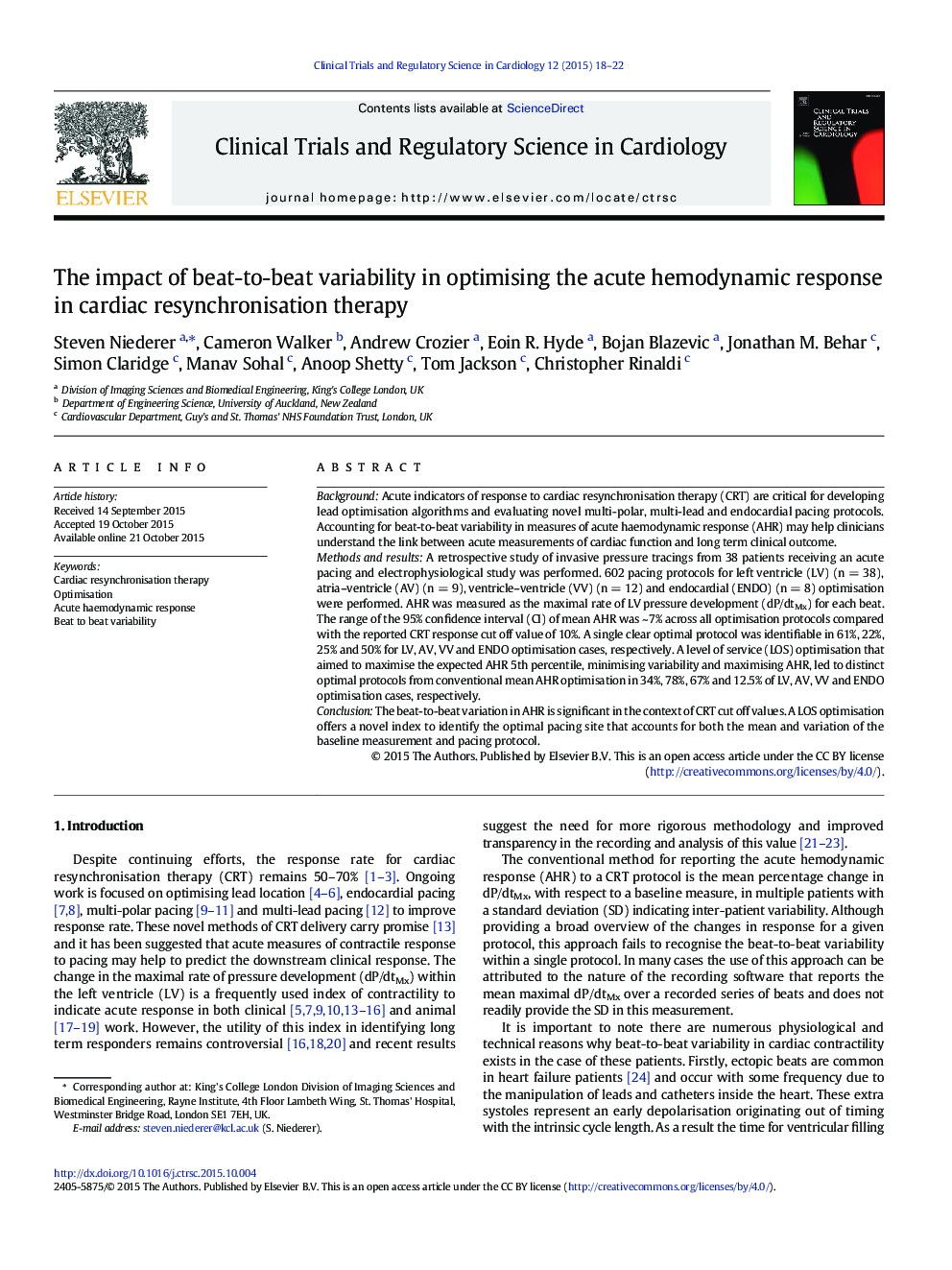| Article ID | Journal | Published Year | Pages | File Type |
|---|---|---|---|---|
| 2498650 | Clinical Trials and Regulatory Science in Cardiology | 2015 | 5 Pages |
BackgroundAcute indicators of response to cardiac resynchronisation therapy (CRT) are critical for developing lead optimisation algorithms and evaluating novel multi-polar, multi-lead and endocardial pacing protocols. Accounting for beat-to-beat variability in measures of acute haemodynamic response (AHR) may help clinicians understand the link between acute measurements of cardiac function and long term clinical outcome.Methods and resultsA retrospective study of invasive pressure tracings from 38 patients receiving an acute pacing and electrophysiological study was performed. 602 pacing protocols for left ventricle (LV) (n = 38), atria–ventricle (AV) (n = 9), ventricle–ventricle (VV) (n = 12) and endocardial (ENDO) (n = 8) optimisation were performed. AHR was measured as the maximal rate of LV pressure development (dP/dtMx) for each beat. The range of the 95% confidence interval (CI) of mean AHR was ~ 7% across all optimisation protocols compared with the reported CRT response cut off value of 10%. A single clear optimal protocol was identifiable in 61%, 22%, 25% and 50% for LV, AV, VV and ENDO optimisation cases, respectively. A level of service (LOS) optimisation that aimed to maximise the expected AHR 5th percentile, minimising variability and maximising AHR, led to distinct optimal protocols from conventional mean AHR optimisation in 34%, 78%, 67% and 12.5% of LV, AV, VV and ENDO optimisation cases, respectively.ConclusionThe beat-to-beat variation in AHR is significant in the context of CRT cut off values. A LOS optimisation offers a novel index to identify the optimal pacing site that accounts for both the mean and variation of the baseline measurement and pacing protocol.
